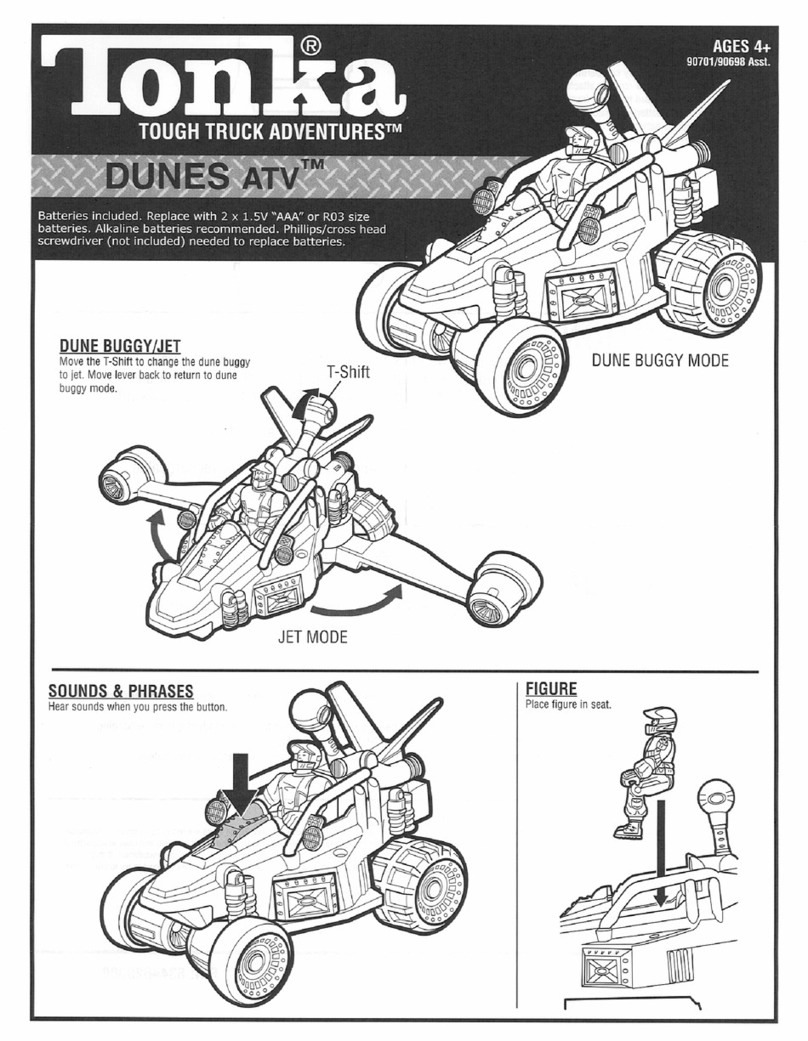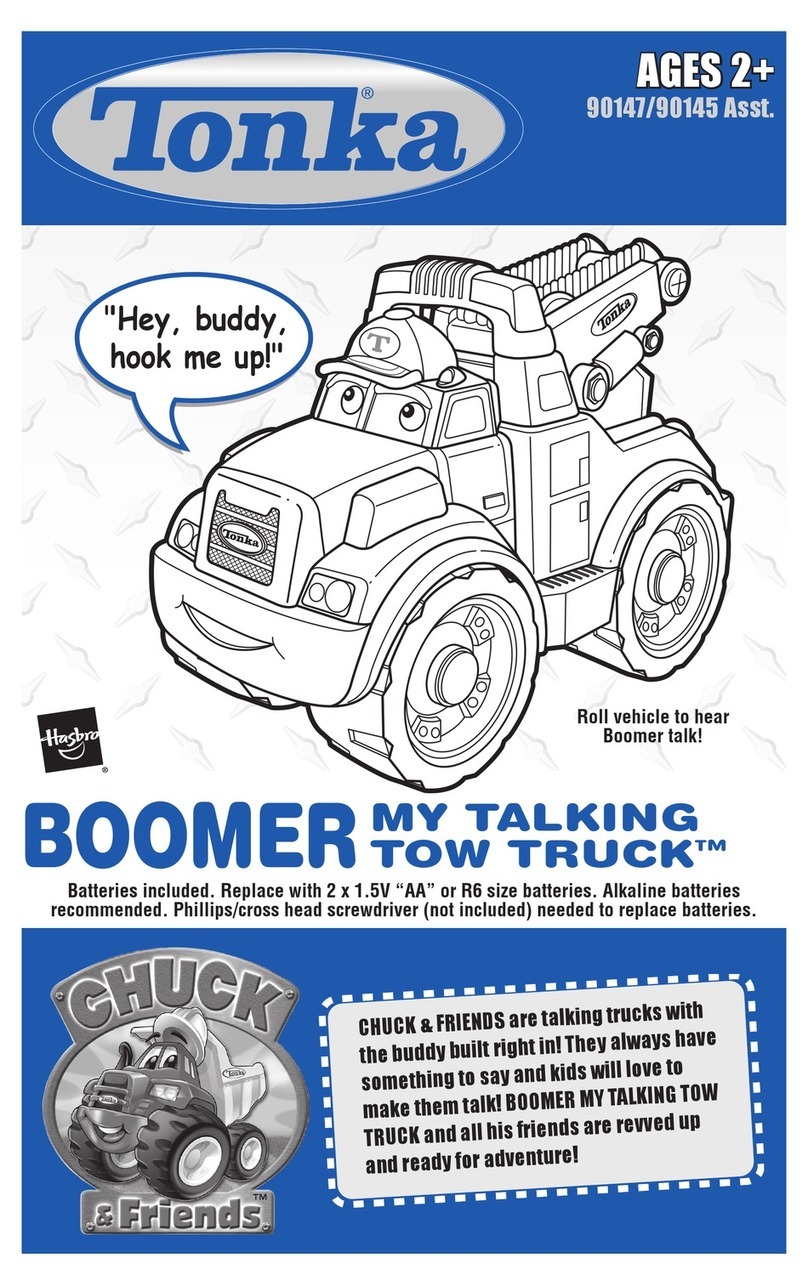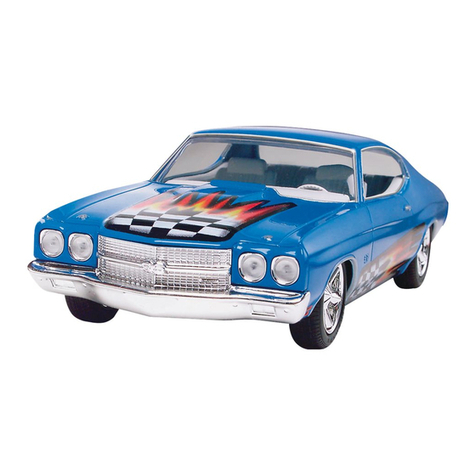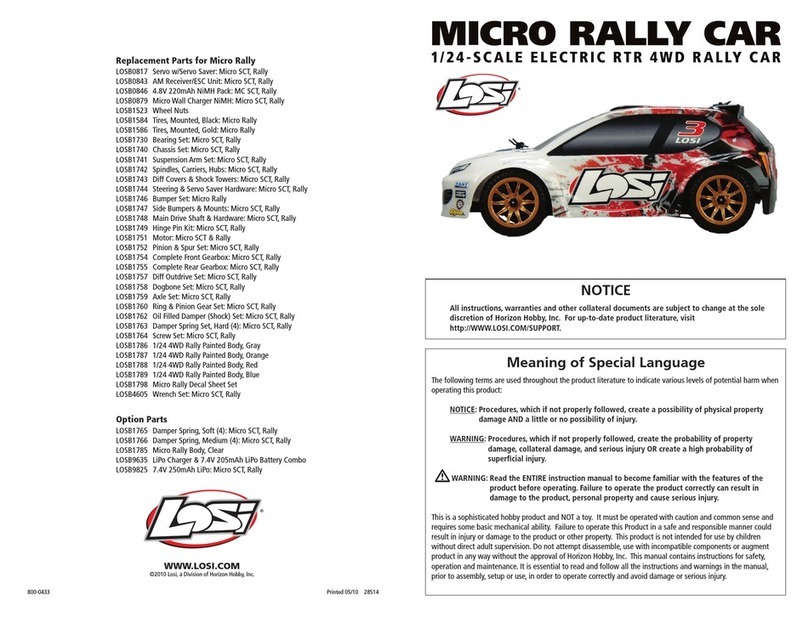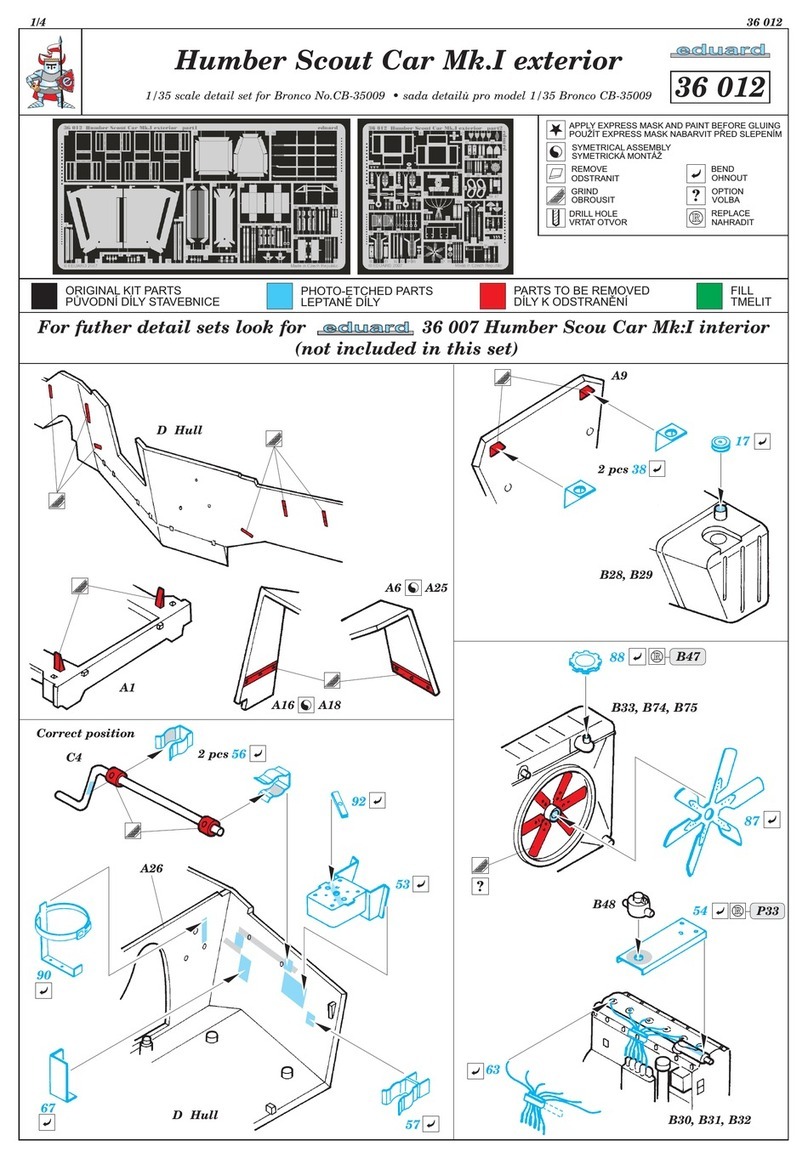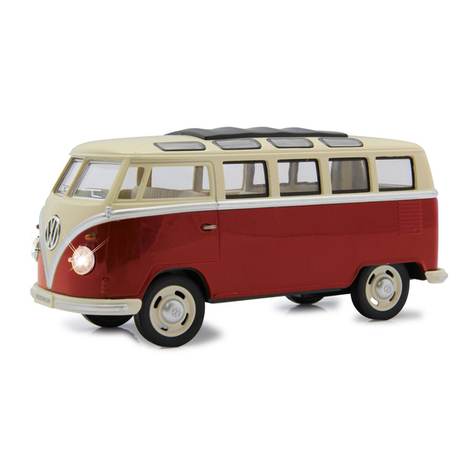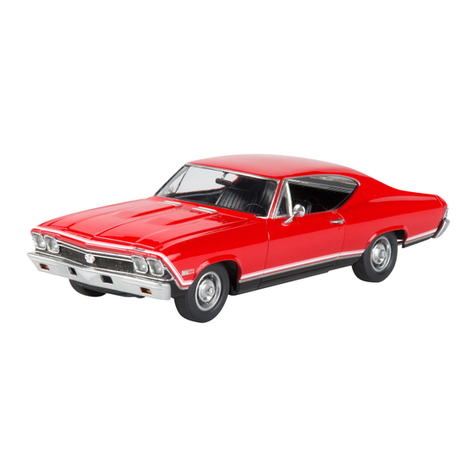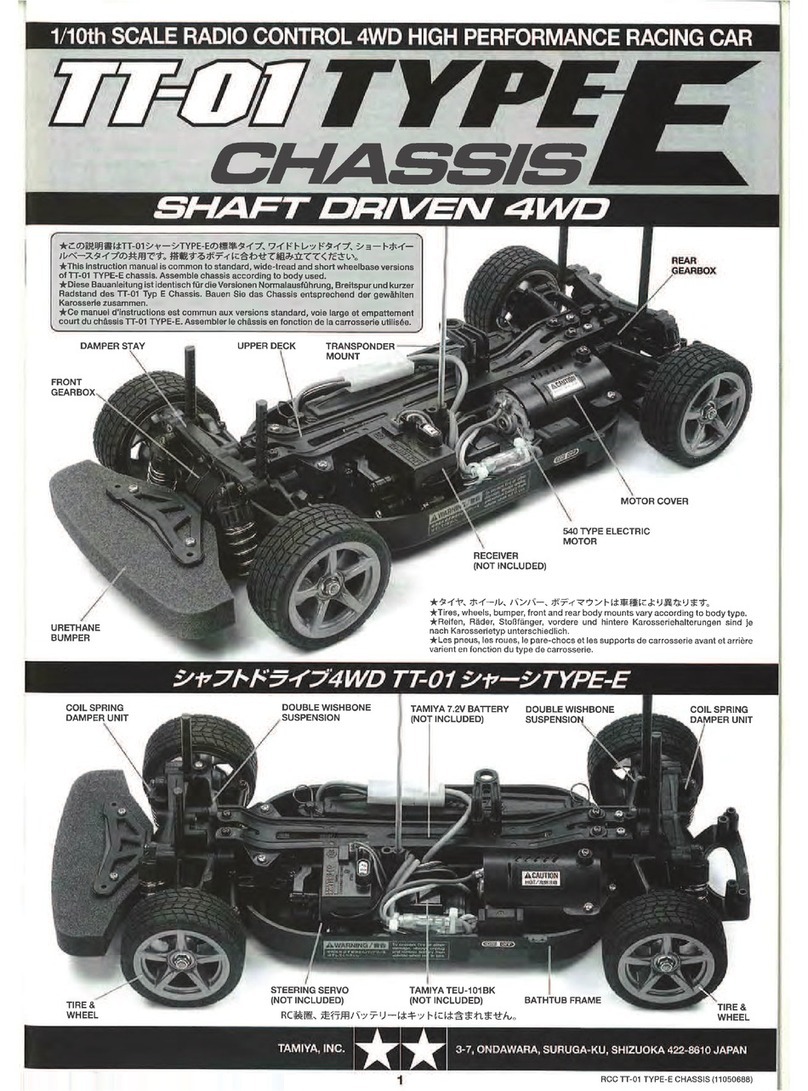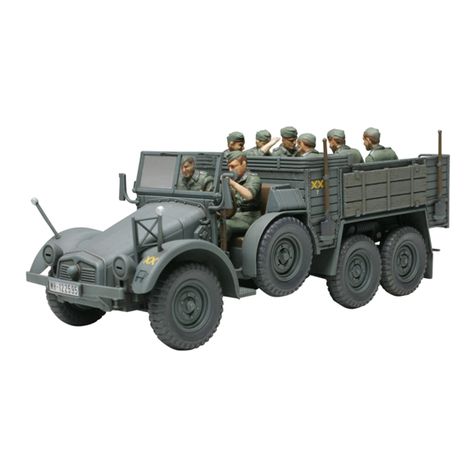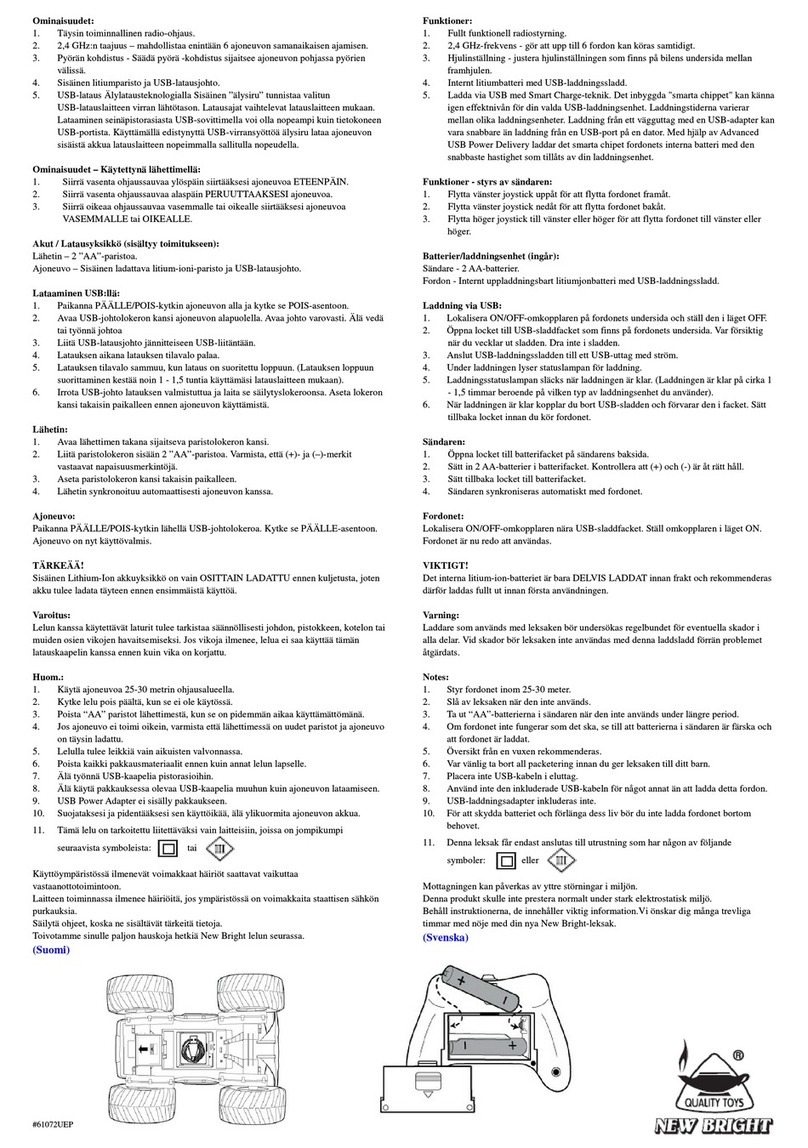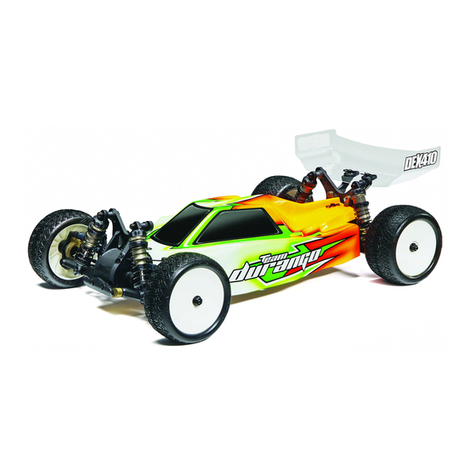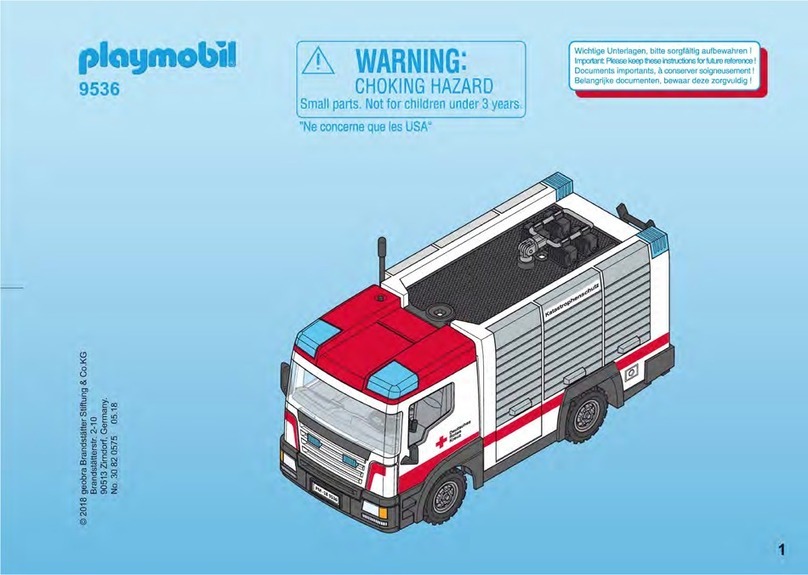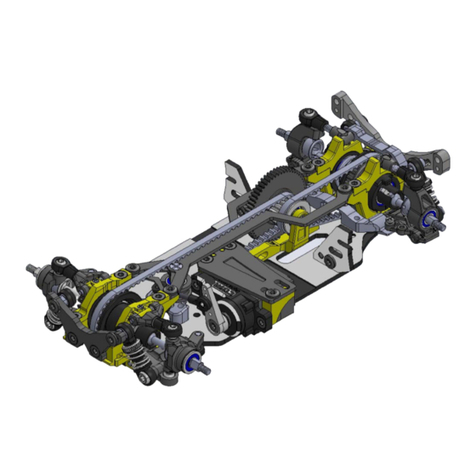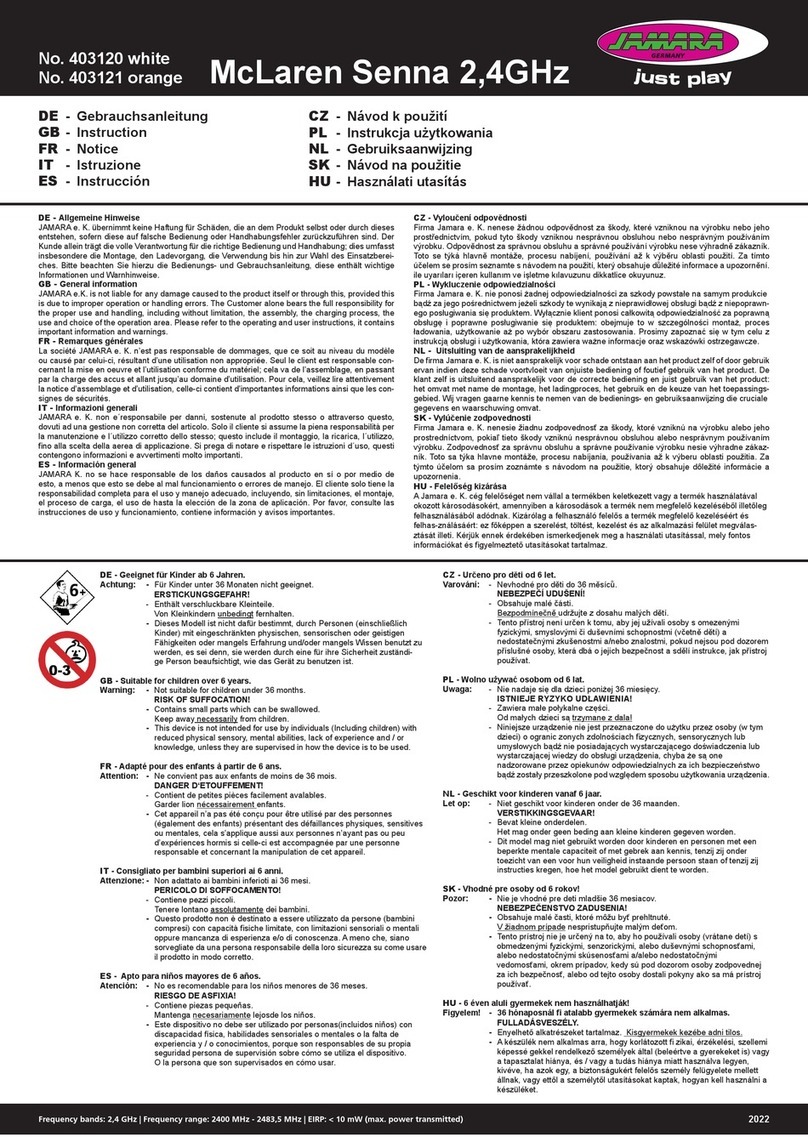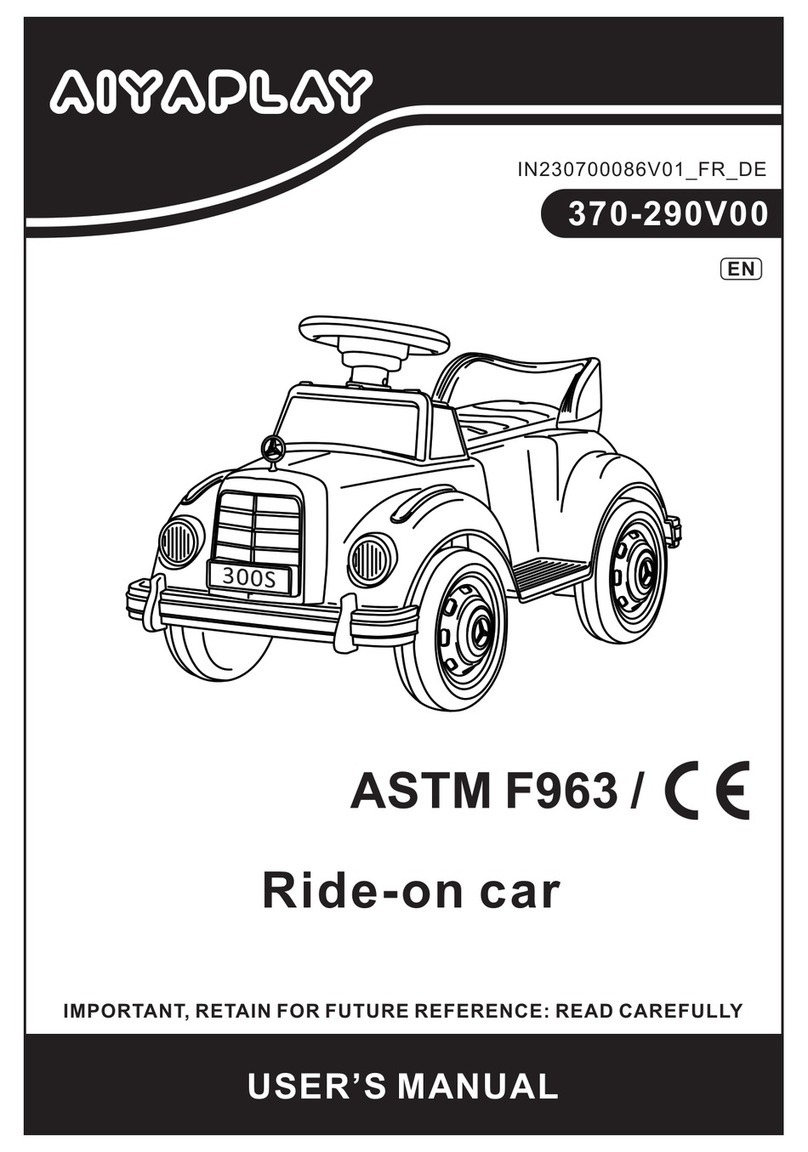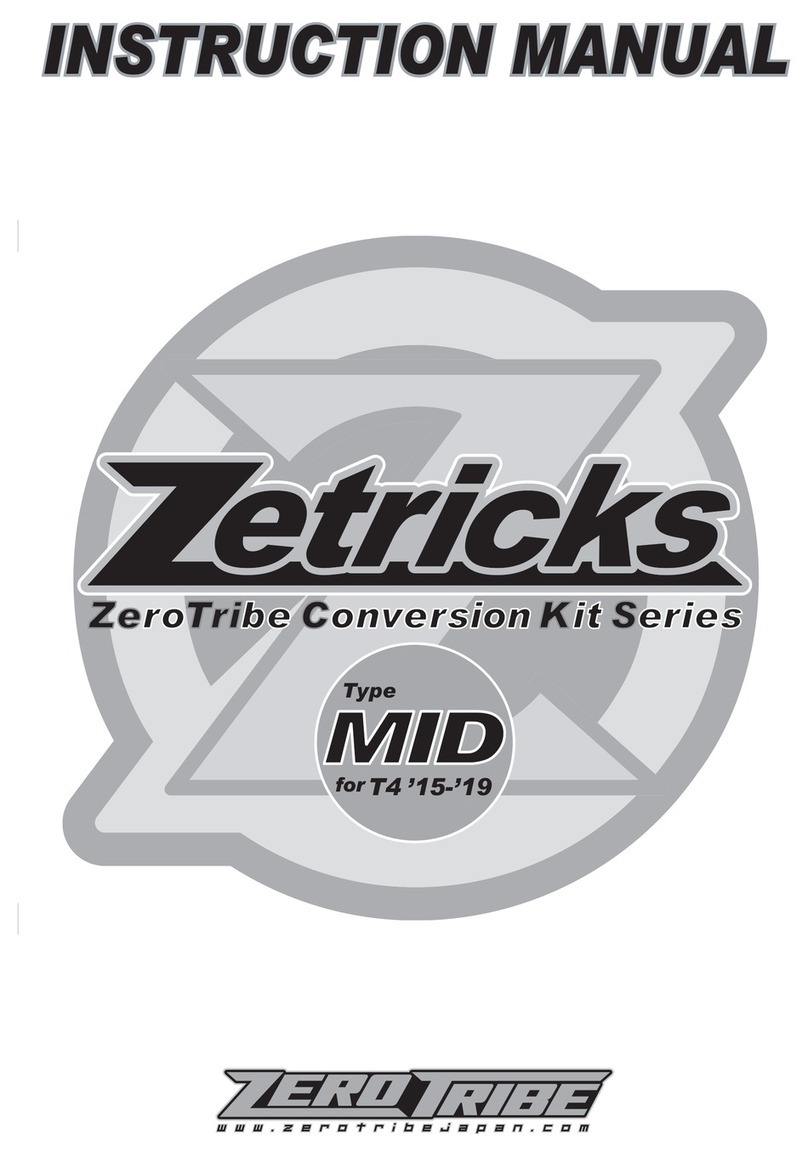Tonka DUMP TRUCK User manual

12V TONKA DUMP TRUCK
this manual contains important safety, performance and
maintenance information. read the manual before taking your
first ride or allowing your child to ride your new electric
ride-on toy. keep the manual handy for future reference.
FOR AGES 3+
MAXIMUM WEIGHT: 130 lb. (59 kg) / 65 lb. (29.5 kg) per seat
OWNER’S MANUAL
NOTE: Illustrations in this manual are for reference purposes only and may not reflect the
exact appearance of the actual product. Specifications are subject to change without notice.
DO NOT RETURN TO STORE!
QUESTIONS OR COMMENTS?
1-800-288-1560
STOP

1
TABLE OF CONTENTS
ELECTRIC CAR SPECIFICATIONS
AIntroduction, Safety and Warnings
BBefore You Begin Assembly
CParts Diagram
DAssembly
EHow to Use Your Vehicle
FDetailed Maintenance and Repair
GTroubleshooting Guide
HWarranty
SUITABLE AGE
CAPACITY
SPEED
CHARGER / INPUT
OUTPUT
CHARGING
BATTERY
SIZE OF CAR
AVERAGE BATTERY LIFE
2
6
7
8
16
19
24
27
3+
Up to 130lbs (59kgs)
Low 2.5 MPH / High 5.0 MPH
AC120V / 60HZ
DC12V, 1A
12-18 Hours
12V10AH, 1 x Battery
1480 x 934 x 809mm
300 Charges

2
INTRODUCTION, SAFETY, AND
WARNINGS
GENERAL WARNING
WARNING
WARNING
ABOUT THIS MANUAL: This Manual was written to help you and your child
get the most performance, comfort, enjoyment and safety when riding your
new electric ride-on toy. It is important for you to understand your new electric
ride-on toy. By reading this manual before you let your child go out on his/
her first ride, you will know how to get the most from your new electric ride-
on toy. It is also important that your or your child's first ride be in a controlled
environment, away from cars, obstacles, and other riders.
Riding an electric ride-on toy can be a dangerous
To reduce risk of injury, adult supervision is required. Never
CHOKING HAZARD–Small parts not suitable for children
RIDE AT YOUR OWN RISK AND ALWAYS USE COMMON SENSE.
ALWAYS USE PROPER RIDING ATTIRE.
activity, even under the best of circumstances. Proper maintenance of your
new ride-on toy is your responsibility and helps reduce the risk of injury. Certain
conditions may cause components to fail without fault of the manufacturer. The
ride-on toy can and is intended to move and it is therefore possible to lose control,
fall off and/or get into dangerous situations that no amount of care, instruction or
expertise can eliminate. If such a thing does occur your child can become seriously
injured or die, even when using safety equipment and other safety precautions.
This manual contains many warnings and cautions concerning the
consequences of failing to inspect, maintain or properly use your electric
ride-on toy. Because any fall can result in serious injury or even death, we do
not repeat the warning of possible serious injury or death each time such a
possibility is mentioned in this manual or the risk of falling leads to a warning.
use in roadways, near motor vehicles, on or near steep inclines or steps,
swimming poolsor other bodies of water; always wear shoes, and never allow
more than two (2) riders.
under three years old.

3
RIDER USE AND REQUIRED PARENTAL SUPERVISION
Always wear appropriate clothing and shoes, including lace-up or similar
shoes with rubber soles. Never ride barefoot or in sandals and make sure that
shoelaces or other fasteners are tied and kept away from the wheels and drive
system of the ride-on toy.
RIDERS MUST NOT EXCEED THE WEIGHT LIMIT OF 130 pounds (59kg) and MUST BE OVER 3 years old.
The age grade for the electric ride-on toy is for 3 years and older. Just because
your child is within the age and weight limitations specified for the electric
ride-on toy, does not mean that his/her size is appropriate to fit or maintain
control of the electric ride-on toy or that he/she is capable of safely operating
the electric ride-on toy. You are the best judge of whether you or your child
can safely operate the electric ride-on toy; this includes determining whether
your child is at the appropriate developmental stage for safe use of the electric
ride-on toy. Any rider that is unable to fit comfortably on the electric ride-on toy
should never attempt to ride it. A parent's decision to allow their child to use the
electric ride-on toy should be based on the child's maturity, skill and their ability
to follow rules. Remember that the electric ride-on toy is intended for use only
by children who are, at a minimum, able to comfortably and safely operate it.
Children operating the electric ride-on toy should be supervised by an adult at
all times. Parents should ensure that children only use the electric ride-on toy
safely and within their age and physical limits.
Children should be made aware of all possible riding hazards and correct riding
behavior before they ride the electric ride-on toy and should be supervised by
an adult at all times. Please explain the following to them as often as necessary.
This manual contains very important safety information. It is your responsibility to
completely review this information and make sure that all riders understand all of
the warnings, cautions, instructions and safety topics addressed in this manual
and to assure that all riders are able to safely and responsibly use the electric
ride-on toy. You should periodically review and reinforce all information in this
manual with all riders, especially children. You should also regularly inspect and
maintain your electric ride-on toy to insure the safety of all riders. Make sure that
your new electric ride-on toy is properly fitted to any child riding it; that it is in good
repair and safe operating condition; that you and your child have gone over the
use, operation and safety information in this manual; that you and your child have
learned and understand what to do and what not to do with your new electric ride-
on toy, including observing all applicable laws, rules and common sense.

4
SAFE RIDING PRACTICES AND WARNINGS
• Check and obey all local laws or regulations which may be in effect in the
locations where the electric ride-on toy may be used.
• Always wear appropriate clothing and shoes.
• Observe the age and weight limitations on the cover of this manual.
• Always stay seated while riding the electric ride-on toy. To stop you must
take your foot off the foot pedal.
• Children must be supervised by an adult at all times to be safe.
• Always be alert and ride your electric ride-on toy defensively. Watch out for
obstacles that could catch one of the electric ride-on toy's wheels or force
you to turn suddenly and/or lose control. Be careful to avoid pedestrians,
persons using other wheeled products (including roller or in-line skates.
skateboards, scooters, bikes, etc.), children or animals who may enter your
path. Always respect the rights and property of others.
• Do not activate the foot pedal unless you are seated in the vehicle and in a
safe, outdoor ennironment that is suitable for riding your electric ride-on toy.
• Do not attempt or perform any stunts or tricks on the electric ride-on toy. It is
not made to withstand such misuse and abuse.
• Keep both hands on the steering wheel at all times.
• Do not touch the motor on the electric ride-on toy when in use or directly
after use as these parts can become extremely hot.
• Never allow more than two person to ride the electric ride-on toy at one time
and never try to tow anything.
• Do not use near steps, water, or swimming pools.
• Do not ride in wet weather.
• Never immerse the electric ride-on toy in water; electrical and drive
components could be damaged by water or create other potentially unsafe
conditions.
• Keep your fingers and other body parts away from the motor, steering
system, wheels and all other moving components.
• Never hitch onto another vehicle or let yourself be pulled or pull anyone or
anything while riding the electric ride-on toy.
• Ride only on smooth, flat, dry surfaces such as pavement or level ground
without loose debris, such as sand, leaves, rocks or gravel. Water, mud, ice,
bumpy, uneven, slick, or rough surfaces could impair traction and contribute
to possible loss of control.
• Do not ride on or near hills or steep inclines. Ride only on level ground to
avoid tip over.
• Avoid sharp turns, bumps, drainage grates, and other obstacles.
• Do not ride at night or where there is limited visibility.
• Do not ride indoors or on surfaces that could become damaged such as
carpet or flooring.
• Do not ride on streets, around cars, or in foot or vehicle traffic.
• Regularly check the electric ride-on toy and its components. If any parts are
broken or worn, do not ride the electric ride-on toy until you have fixed or
replaced the broken or worn parts.

5
PRE-RIDE SAFETY CHECKLIST
USING THE CHARGER
• Do not to allow hands, feet, hair, body parts, clothing, or similar articles to
come in contact with wheels or other moving parts.
• Before each cycle of operation, you must perform the preoperation checks
specified in this manual or by the manufacturer, including:
• That all guards and pads originally supplied by the manufacturer are in proper
place and in serviceable condition;
• That the area that the unit is to be operated in is safe and suitable for safe operation;
• That all safety labels are in place and understood by everyone, inclluding the riders;
• That any and all axle guards, chain guards, or other covers or guards
supplied by the manufacturer are in place and in serviceable condition; and
• That tires/wheels are in good condition and have sufficient tread remaining.
• Avoid sharp bumps, drainage grates, and sudden surface changes.
• Check to make sure that all components are properly secured and are functioning
according to the manufacturers specifications.
• Components must be maintained and repaired and only with the manufacturer's
authorized replacement parts. Installation should be performed only by adult,
qualified personnel.
The charger should be examined regularly for damage to the cord, plug,
enclosure and other parts. In the event such damage has occurred, the electric
ride-on toy should not be charged until the charger has been repaired by
qualified personnel or replaced. Use only the supplied, recommended charger.
Never modify or alter the electrical system. Alterations could cause a fire or
explosion resulting in serious injury or death and could also ruin the electrical
system.
• Always use caution when charging.
• The charger is not a toy and should be operated by an adult.
• Never operate the charger near flammable materials or liquids, and operate
the charger in well-ventilated areas.
• Disconnect the charger and unplug it from the electric ride-on toy when not
in use.
• Do not exceed the recommended charging time.
• Always disconnect the charger from the electric ride-on toy prior to wiping
down or cleaning the electric ride-on toy with any liquid.
WARNING
FAILURE TO HEED THE WARNINGS LISTED ABOVE INCREASES RISK OF POTENTIALLY
SERIOUS INJURY. USE THE APPROPRIATE CAUTION WHEN RIDING AND ALWAYS WEAR
APPROPRIATE CLOTHING AND SHOES.

6
ESTIMATED ASSEMBLY TIME
Remove all packing and items from the display box. Make sure that the power
switch is turned "OFF" before assembling the electric ride-on toy.
If you experience a problem with this product, or are missing a part, please call
us at 1-800-288-1560, rather than return this product to the store.
Please identity all parts before assembly and save all packaging material until
assembly is complete to ensure that no parts are discarded.
You should allow approximately 35 minutes for assembly, not including initial
charging time. Initial charging can take approximately 18 hours (see pages
12–13 for charging information).
WARNING
BEFORE YOU BEGIN ASSEMBLY
WARNING: DO NOT USE NON-ORIGINAL OR
NON-RECOMMENDED PRODUCTS WITH YOUR
ELECTRIC RIDE-ON TOY.
Altering of the original components or use of non-recommended
replacement parts may or may not be compatible with the design and will
void the warranty and may cause an unsafe condition resulting in serious
injury or death.

7
Note: Some parts shown are assembled on both sides of vehicle.
1. Plastic Body Assembly x1
2. M5 Nut x1
3. M5 x 35 Machine Screw x1
4. Steering Wheel x1
5. Seat x1
6. M5 x12 Machine Screw x4
7. 4x16 Round Head Screw x11
8. Dump Lock Bracket x1
9. Dump x1
10. Exhaust x1
11. Axle Cap x4
12. M10 Locknut x4
13. Ø12 Washer x6
14. Front Wheel x2
15. Driving Wheel x2
16. Gear Box x2
17. Ø12 Bushing x2
18. Rear Axle x1
19. Steering Column x1
20. Ø10 Washer x3
21. Split Pin x1
22. M5x16 Machine Screw x1
A. 17mm Socket Wrench x2
B. Charger x1
PARTS DIAGRAM

8
TOOLS REQUIRED:
1. FRONT AXLE ASSEMBLY
• Turn over the vehicle body and cut off the
plastic tie on the front wheel axle with
scissors.
• Remove the M5 screw, washer and nut
from the front wheel axle.
• Adjust the wheel axle so that the axle is in
the correct position as shown in diagram;
then reinsert the M5 screw and the Ø5
washer as shown, making sure the M5
screw goes through the holes in the metal
plates A and B (ensure plate A sites over
plate B as shown in the diagram and
indicated by a stopper, to avoid fingers
being trapped while steering), and tighten
securely with the nut under it.
ASSEMBLY
Your new vehicle requires adult assembly. Please set aside around 35 minutes
for assembly. Please identify all parts before assembly and save all packaging
material until assembly is complete to ensure that no parts are discarded.
Phillips Screwdriver
(not included)
17mm Socket Wrench
(included)
Standard Slip Joint Pliers
(not included)
WARNING Children can be harmed by small parts, sharp edges and
sharp points in the vehicle's unassembled state, or by electrical items. In
the unassembled sate, this package contains small parts. Adult assembly is
required; children should not handle parts, or help in assembly of the vehicle.

9
2. FRONT WHEEL ASSEMBLY
3. REAR AXLE ASSEMBLY
4. DRIVING WHEEL ASSEMBLY
• Turn the vehicle body upside down.
• Remove all parts from front wheel axle.
• Fit a Ø12 washer onto the axle.
• Fit a bushing onto the axle.
• Slide a wheel onto the axle, and make the
bushing match inside the wheel.
• Fit another Ø12 washer and a M10 locknut,
then tighten it. (Note: Do not over-tighten)
• Insert the axle cap.
• Repeat above operation for the front
wheel on the other side.
• Turn the vehicle body upside down.
• Remove all parts from the rear axle.
• Insert the longer end of the rear axle
through the hole in the vehicle body as
shown, and ensure that the rear axle sits
well inside the vehicle body.
• Slide the gear box (standing at back of
vehicle body) onto the rear axle. Connect
motor and motor wire, and insert the
wires into car body first before you insert
the motor (Remark: “R” labeled gear box
should be fitted to the “R” labeled side of
vehicle body, “L” labeled gear box should
be fitted to “L” labeled side of vehicle
body.)
• Slide the driving wheel onto rear axle and
make it match up with the gear box.
• Insert a Ø12 washer onto the axle.
• While holding the rear axle with a 17mm
socket wrench, fit the M10 locknut to the
end of the rear axle with another 17mm
socket wrench. DO NOT over tighten;
the rear axle ends are supposed to be
exposed; 1-2 threads exposed can be OK.
• Insert the axle cap.
• Repeat above steps on the other side to
install the other driving wheel.

10
IMPORTANT! CHECK GAP AFTER ASSEMBLING WHEELS
5. STEERING COLUMN ASSEMBLY
• Turn the vehicle on its side as shown in diagram.
• Slide a Ø10 washer onto the steering column from the longer end.
• Insert the longer end of steering column shaft through the bottom hole in the
front of vehicle body until it sticks out of the hole in the dash.
• Slide a Ø10 washer onto the short end of steering column, then insert it
through the hole in the front axle linkage.
• Fit a Ø10 washer onto the short end of the steering column.
• Then insert a split pin into the hole in the short end of steering column, and
split it using standard slip joint pliers.
6. STEERING WHEEL ASSEMBLY
• Turn the vehicle body upright gently.
Remove the M5 x 35 machine screw and
M5 nut from the steering wheel with a
screwdriver.
• Insert the steering wheel onto the end
of the steering column, line up the hole
in the steering wheel and the hole in the
steering column, reinsert the M5 x 35
machine screw and M5 nut as shown
and tighten securely with a screwdriver.
After assembling any wheel onto the axles, make sure to
check the gap between the screw thread and the outside of
the wheel (refer to the adjacent diagram). If the gap is too
big, add two or three washers on the axle to the inside of the
wheel. After tightening the nut on the outside of the wheel,
please turn the wheel with your finger to check if the wheel
can run smoothly. This is a very important step because if
the wheel can run smoothly, it is ok; but if the nut presses
the wheel and the wheel can't run smoothly, the motor will
be broken easily! If the wheel does not run smoothly, you
will need to decrease one or two washers to make sure the
wheel can run smoothly!
Note: If the wheel nuts are loose, the wheels will not engage
the forward gear. Tighten the nut with the wrench.
GAP

11
7. INSTALL STEERING WHEEL BATTERIES
(Note: Batteries not included)
• Loosen the screw in the steering wheel
and remove the cover.
• Insert 2x1.5V size AA AM-3 or LR6
batteries as shown.
• Replace the cover and tighten the screw
to secure it in place.
Battery Safety Information:
Batteries may leak fluids that can cause chemical burn injury or ruin your product.
To avoid battery leakage:
• Install batteries correctly, observing the polarity(+,-) signs to avoid leadage.
• Do not mix old and new batteries.
• Do not mix batteries of different types; alkaline, standard(carbon-zinc) or
rechargeable (NiMH),
• Remove the batteries from the battery compartment when the unit will not
be used for an extended period of time.
• Always remove exhausted batteries from the batteries compartment.
• Do not to dispose of batteries in fire.
• Do not short circuit the supply terminals.
• Replace the batteries when the horn sounds distorted.
• Non-rechargeable batteries are not to be recharged.
• Use only batteries of the same or equivalent type as recommended.
• If removable rechargeable batteries are used, they are only to be charged
under adult supervision.
• Remove rechargeable batteries from the product before charging.
• Battery chargers used with toys must be examined regularly for damage to
the cord, plug, enclosure and other parts. In the event that such damage is
found, the toy must not be used with the battery charger until the damage
has been repaired.
8. EXHAUST ASSEMBLY
1. Turn the vehicle body upright.
2.Insert the exhaust into the hole in the hood and push until you hear this click
into place.

12
9. DUMP LOCK BRACKET ASSEMBLY:
• Turn the dump upside down gently.
• Set the dump lock bracket as shown (aim at three holes in the dump), and
tighten with two Ø4x16 round head screws first.
• Turn the dump back to upright position, and tighten with another Ø4x16
round head screw as shown.
10. DUMP ASSEMBLY
• Push and hold the dump lock (between the seats) forward (riding position) so
that the dump can be located horizontally over the truck body.
• Fit the tabs on the bottom of dump into the slots in the vehicle body as shown.
• Insert eight Ø4 x16 round head screws, and tighten securely with a screwdriver.

13
11. POWER SUPPLY CONNECTION
Note: The battery is disconnected for shipment to prevent the battery from
draining.
• Uscrew the four screws on the seat with a screwdriver and move the seat.
• Plug the battery connector into the control module connector, then re-set the
seat with four screws.
BATTERY CHARGING
IMPORTANT! Before first time use, charge the battery for at least 18 hours.
Charge the battery for at least 12 hours after each use of the vehicle. Never
charge the battery longer than 30 hours. Over charging or undercharging the
battery may shorten battery life and decrease vehicle running time.
WARNING: Battery can fall out and injure a child if vehicle tips over.
Always use battery retainer.
PREVENT FIRE
• Never modify the electrical system.
• Alterations could cause a fire resulting in serious injury and could also ruin
the electrical system.
• Use of the wrong type battery or charger could cause a fire or explosion
resulting in serious injury.
• Use of non-original components on this vehicle could cause overheating, fire
or explosion.
• The battery must be handled by adults only.
• The battery is heavy and contains sulfuric acid (electrolyte).
• Dropping the battery could result in serious injury.
• Never allow children to charge the battery.
• Battery charging must be done by adults only. A child could be injured by
the electricity involved in charging the battery.

14
• Never lift or carry the battery by the wires or connector. This can damage
the battery and possibly cause a fire resulting in serious injury. Lift and carry
the battery by the case only.
• Read the safety instructions on the battery.
• Examine the battery, charger and their connectors for excessive wear or
damage each time you charge the battery.
• If damage or excessive wear is detected, do not use the charger or the
battery until you have replaced the worn or damaged part.
CAUTION: Use the charger in dry locations only.
1. Plug the charger port into the input socket( the socket is UNDER THE SEAT).
2. Plug the charger plug into a wall outlet. The battery will begin charging.
Note: Red LED light indicates battery is charging and a green LED light
indicates battery is fully charged. (If the lights on the charger do not light up,
check the power to the outlets.)
IMPORTANT NOTE
We recommend that you start charging your battery before beginning
assembly of your new vehicle.
• The battery must be upright while charging.
• The charger is not a toy, and should only be operated by adults.
• Do not short-circuit the battery.
• You do not need to remove the battery from your vehicle to recharge it .
• Before charging the battery, examine the battery case for cracks and other
damage which may cause sulfuric acid (electrolyte) to leak during the
charging process. If damage is detected, do not charge the battery or use it
in your vehicle. Battery acid is very corrosive and can cause severe damage
to surfaces it contacts.
• Do not charge the battery on a surface (such as a kitchen counter top)
which could be damaged by the acid contained inside the battery. Take
precautions to protect the surface on which you charge your battery.

15
• Use only an original charger (AC 120V 60Hz) with an output of DC 12V (1A) to
charge your vehicle battery.
• Note to Adults: Regularly examine the charger for damage to the cord, plug,
housing or other parts that may result in the risk of fire, electric shock or injury.
• If you battery is old and will not accept a charge, do not leave it in the
vehicle. Always remove a dead battery from the vehicle.
• After the first charge, recharge the battery for at least 12 hours after each use.
• Never charge the battery longer than 30 hours. Charge the battery after
each use, regardless of how long the vehicle was used.
• Do not allow the battery to run down completely before charging.
• Charge the battery before storing the vehicle.
• Charge the battery at least once per month, even if the vehicle has not been used.
WARNING: Use the charger in dry locations only.
NOTE:
• This product comes with CHARGING PROTECTION: when charging, all the
functions will be cut off.
• The POWER SWITCH must be switched to the OFF position when charging.
• Recharges after initial charge – Up to 12 hours, and never charge the battery
longer than 30 hours.
• When the vehicle begins to run slowly, recharge the battery.
• After each use or once a month minimum recharge time 12 hours, less than
30 hours at most.

16
HOW TO USE YOUR VEHICLE
FORWARD
1. Move the “Forward-Backward switch” to the “Forward” position.
2. Press the “Foot pedal” and the vehicle will move forward.
STOP
Move the “Forward-Backward switch” to the “Stop” position, the vehicle will
stop; when your child’s foot is removed from the “Foot Pedal”, the vehicle will
also stop automatically.
BACKWARD
1. Move the “Forward-Backward Switch” to the “Backward” position.
2. Press the “Foot pedal”, and the vehicle will move backward.
SOUND BUTTON
Press the sound buttons on the steering wheel to play sounds.
HIGH/LOW SPEED SWITCH
The switch operates the vehicle to move at high or low speed.

17
DUMP OPERATION INSTRUCTION
1. To tip the dump, use one hand to push the dump lock (between the seats)
forward (of riding position) and hold it until the dump tips, and at the same
time use another hand to tip the dump.
2. After tipping the dump, to reset the dump back, make sure you hear the
dump lock “click” into position for safety, and use your hand to lift the dump
again to re-check and assure the dump is safely locked into.
WARNING:
• Maximum load weight on the dump is 5kgs (11lbs).
• No stepping on or in dump bed!
• No climbing on or in dump bed!
• To ensure safety, adult supervision is required when playing with the dump.
IMPORTANT
Always stop vehicle when changing the direction to avoid damage to the gears
and motors.
• This vehicle has an adjustable seat belt; please instruct children on how to
fasten the seat belt before using.
• Do not let any child touch the wheels or be near them when the car is
moving.
• Make sure you come to a complete stop before changing directions from
forward to reverse.
• To avoid accidents, please inspect the vehicle before riding to ensure that it
is in proper working order and safe to ride.
• Appropriate clothing and shoes should always be worn.
• This toy has no brake; to stop, remove foot from foot pedal.
• Check all the screws, cap nuts and protective coverings regularly and
tighten as required.
• Check plastic parts on a regular basis for cracks or broken pieces.

18
SAFETY PRECAUTIONS
• Your new battery must be charged for at least 18 hours before you use it in
your vehicle for the first time.
• The child must have adult supervision at all times.
• Do not ride on the road, footpaths, near pools, or bodies of water.
• Do not allow children under the recommended age to ride the vehicle;
please refer to the age grading.
• Do not allow riders over the recommended weight rating or age grading to
use the vehicle.
• To stop you must take your foot off the pedal.
• Charging should only be done by an adult.
• An adult must teach the child how to operate the vehicle.
• Do not ride on hills or slopes, or in sand, or on other soft, wet, or slippery
surfaces.
• Do not use a different size battery. Use only original or recommended
replacement batteries.
• The vehicle is designed to carry total maximum weight of 130lbs, never allow
more than two riders.
• This product should be assembled and checked by adults before use.
• Don’t wash the vehicle with water. Just clean it with a cloth.

19
DETAILED MAINTENACE AND REPAIR
Turn power “OFF” before conducting any maintenance procedures.
Tools Required:
HOW TO REPLACE FRONT WHEEL
1. Remove the Axle Cap with a flat head screwdriver.
2. Remove the M10 locknut with a 17mm socket wrench.
3. Remove the Ø12 washer .
4. Remove the wheel, then replace with a new one and make sure the Ø12
bushing sits inside the wheel.
5. Remount the Ø12 washer, M10 locknut and securely tighten the wheel; then
re-insert the axle cap.
HOW TO REPLACE REAR WHEEL AND GEAR BOX
1. Remove the Axle Cap with a flat head screwdriver.
2. Remove the M10 locknut with a 17mm socket wrench.
3. Remove the Ø12 washer.
4. Remove the driving wheel, and replace with new wheel.
Flat head Screwdriver
(not included)
17mm Socket Wrench
(included)
Table of contents
Other Tonka Motorized Toy Car manuals

